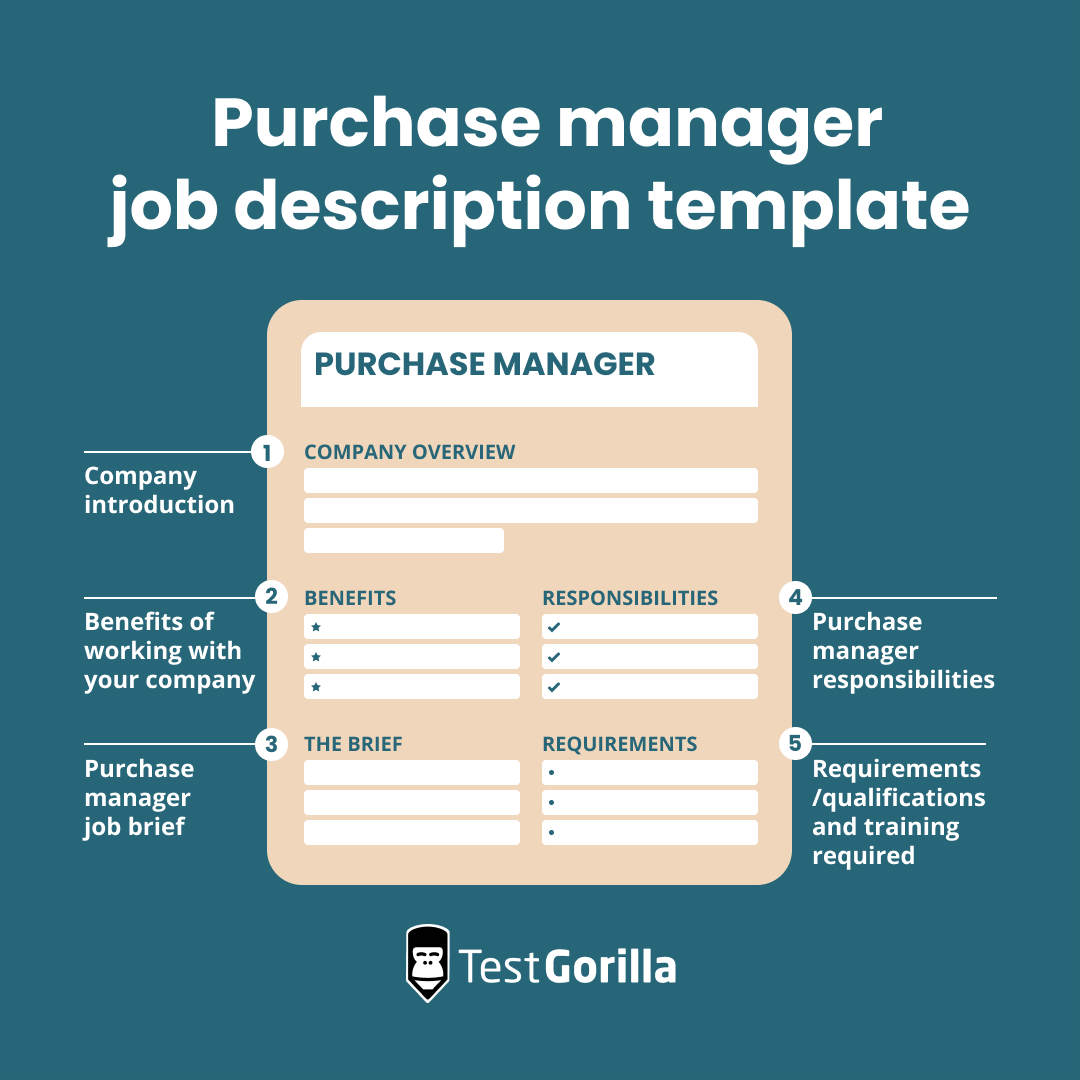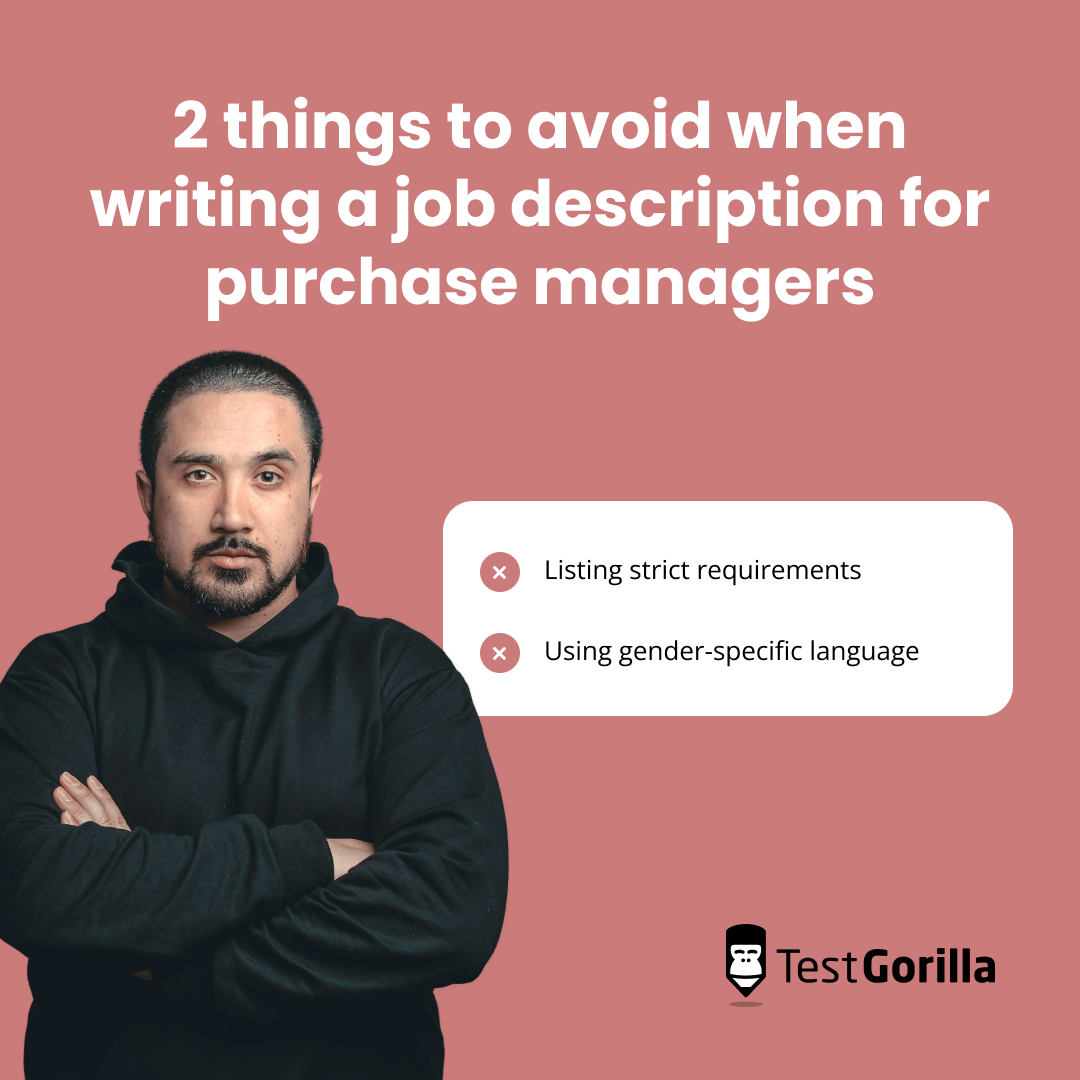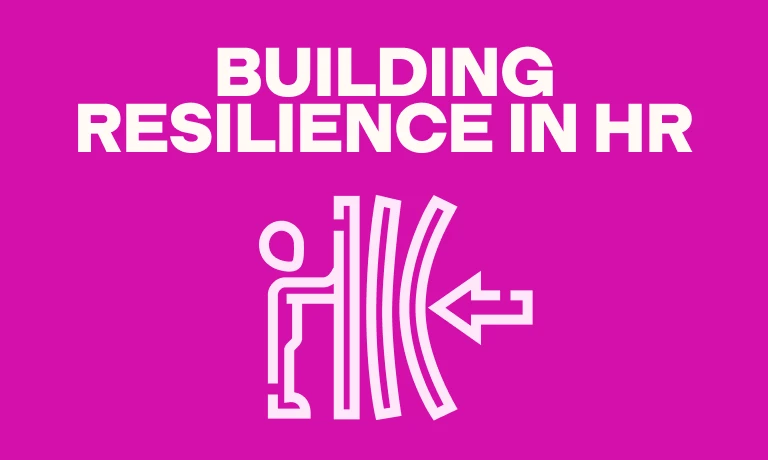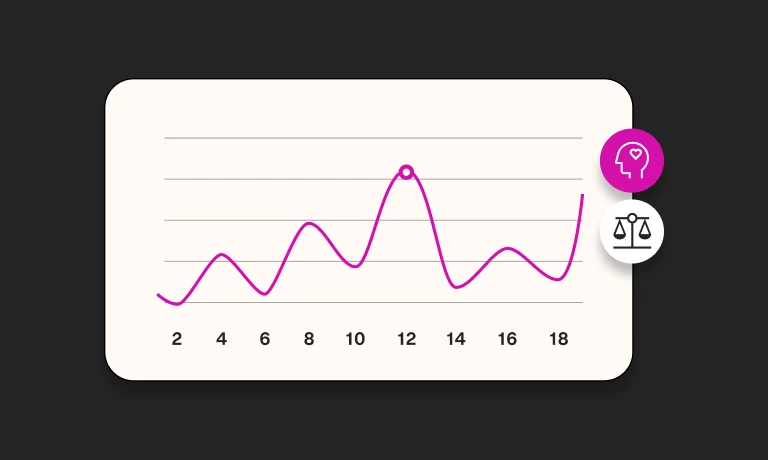Organizations across various industries need skilled purchase managers and supply chain professionals to help them optimize processes, control costs, and manage supplier relationships effectively.
Because of their usefulness across industries and the highly specific skills required for some roles, purchase managers can be challenging to hire. To overcome this, you first need to create a great job description that will attract quality candidates for your position.
Not sure how to do that? Don’t worry.
In this article, we’ll explain how to write an effective purchase manager job description and common mistakes to avoid. We’ve also included a job description template you can use.
Table of contents
- What is a purchase manager
- Key skills to look for in purchase managers
- How to write an effective purchase manager job description
- Purchase manager job description template
- 2 things to avoid when writing a job description for purchase managers
- Next steps: Attracting and assessing purchase manager candidates
- FAQs
- Easily evaluate your purchase manager candidates with TestGorilla
What is a purchase manager
A purchase manager, whose role is similar to a procurement manager, oversees the procurement and sourcing of goods and services for an organization. Their main responsibility is to ensure that the company acquires the necessary materials, products, and services at the right quality, price, and quantity, while also adhering to company policies.
Key skills to look for in purchase managers
When hiring a purchase manager, consider the specific needs and challenges of your organization and tailor your selection criteria accordingly. Depending on your industry and the complexity of your procurement needs, some skills and qualifications may be more important than others.
For example, international businesses may need to write a job description specific to overseas procurement of goods to help find someone with worldwide purchasing experience.
Here are some key skills to keep in mind:
Strategic thinking: The ability to develop and implement procurement strategies aligned with the organization's goals and objectives. A good purchase manager should be able to see the big picture and plan for the long term.
Negotiation skills: Strong negotiation abilities are crucial for securing favorable terms, pricing, and contracts with suppliers. Effective negotiation can result in cost savings.
Relationship management: The capacity to build and maintain positive, long-term relationships with suppliers is vital. This can lead to better collaboration, reliable supply chains, and improved quality.
Market knowledge: Keeping up with industry trends and understanding market dynamics is important for making informed procurement decisions.
Analytical skills: Skill in analyzing costs and cost-saving opportunities within the procurement process is essential. Purchase managers should be able to identify cost-effective solutions.
Supply chain management: Understanding the supply chain, logistics, and inventory management is crucial for optimizing the procurement process.
The best insights on HR and recruitment, delivered to your inbox.
Biweekly updates. No spam. Unsubscribe any time.
How to write an effective purchase manager job description
To ensure you attract the right candidates for your role, take the following into account when writing your job description.
Clearly describe the role
Job seekers want clear and accurate information about the role. This helps them decide if they are a good fit and sets clear expectations from the very beginning.
Use specific language in your job description to give candidates an idea of what their day-to-day will look like. Let them know what size staff they’ll oversee, how long their shifts will be, and any performance milestones they can expect within the first year.
Include the right keywords
Including the right keywords in your job description can help it get more visibility on online job boards. Try to naturally include keywords that job seekers in the industry might use to search for a job, like:
Procurement
Logistics
Purchasing department
Supply chain
Purchase manager job description template
Here’s a job description template you can use to kick off your hiring process.
Company introduction
Your job description should start with a brief description of your company. You can talk about your company’s values and mission as well as its products or services. Be sure to explain how the purchase manager role impacts these.
Benefits of working with [Your company]
Including benefits in your job description is important for attracting and converting qualified applicants. List the standard benefits like salary, health insurance, and retirement plans. But also include any additional perks that management-level staff might enjoy, like a flexible time-off policy.
Purchase manager job brief
Job Title: [Purchase Manager, Purchasing Manager, Procurement Manager]
Reports to: [Supply Chain Manager, Senior Production Manager, Operations Manager]
Position type: [full-time, part-time, contract]
[Compensation details]
Purchase manager responsibilities
Identify and evaluate potential suppliers, negotiate contracts, and establish relationships with them
Oversee relationships with suppliers, monitoring their performance, and resolving any issues that may arise.
Manage the procurement budget to minimize costs
Ensure inventory levels are well maintained and meet needs without over- or understocking
Ensure that purchases meet the quality standards and specifications of our organization
Requirements/Qualifications and training required
Bachelor's degree in supply chain management, business administration, logistics, or related field
2-3 years experience in a similar role
Experience with procurement software and computer programs
Management experience
2 things to avoid when writing a job description for purchase managers
When hiring a manager, avoid the following two mistakes to ensure your job description attracts a large, diverse applicant pool.
1. Listing strict requirements
Traditional job descriptions typically have strict requirements including specific degrees or work history. Writing your job description in this way could actually discourage some great candidates from applying.
Instead, consider writing a skills-based job description that focuses on skills and responsibilities. For example, a candidate who doesn’t have a supply chain management degree may have gotten equivalent training on the job or have transferable skills from a similar industry.
2. Using gender-specific language
In male-dominated industries, it can be difficult to diversify your applicant pool, but writing a gender-neutral job description can help.
Job descriptions with masculine language (like “driven,” “analytical,” “strong”) tend to discourage female applicants. Conversely, studies have shown that gender-neutral language encourages more women to apply without decreasing the number of male applicants.
You can use a free gender decoder tool to check whether your job description inadvertently uses gender-charged words.
Next steps: Attracting and assessing purchase manager candidates
Once you’ve written your job description, you can increase its visibility by sharing it on major job boards like Indeed or Monster. You might also consider niche sites like the Association for Supply Chain Management job board and JobsInLogistics.
Once you’ve gotten some applications, pre-employment assessments can help you determine which candidates are the best fit for your organization.
TestGorilla has a vast test library that includes role-specific assessments like the Purchase Executive and Purchasing Manager test.
FAQs
What salary should I offer in my job description?
A competitive salary for a purchase manager varies depending on location and experience. The average annual salary for a purchase manager in the United States is around $86,000 per year. You can determine what good pay is for your area by using the salary calculator on Glassdoor. Keep in mind that offering the upper end of the average salary range can help you attract and hire the best candidates.
What is a KPI in procurement?
Including KPIs in your job description can help you set clear expectations of the role and responsibilities. Some examples of KPIs for a purchase manager are:
Cost savings
Procurement ROI
Compliance rate
Spend under management
Are purchase managers different from purchase executives?
Purchase managers typically hold a higher-level position within the procurement hierarchy than purchase executives. Depending on your needs, you can learn more about writing a purchasing executive job description here.
Easily evaluate your purchase manager candidates with TestGorilla
Your business has unique needs, so finding a purchase manager with the right set of skills and experience for your company can be a challenge.
A good job description can help the right candidates find you. So it’s important that your job description clearly outlines the role and lists the skills and qualifications that you’re looking for.
Once you’ve gathered some applications, pre-employment tests are a great next step in your hiring process. You can use TestGorilla’s library full of role-specific assessments to evaluate your purchase manager candidates fairly and effectively.
Sign up for a free TestGorilla account today to learn more.
You've scrolled this far
Why not try TestGorilla for free, and see what happens when you put skills first.
















